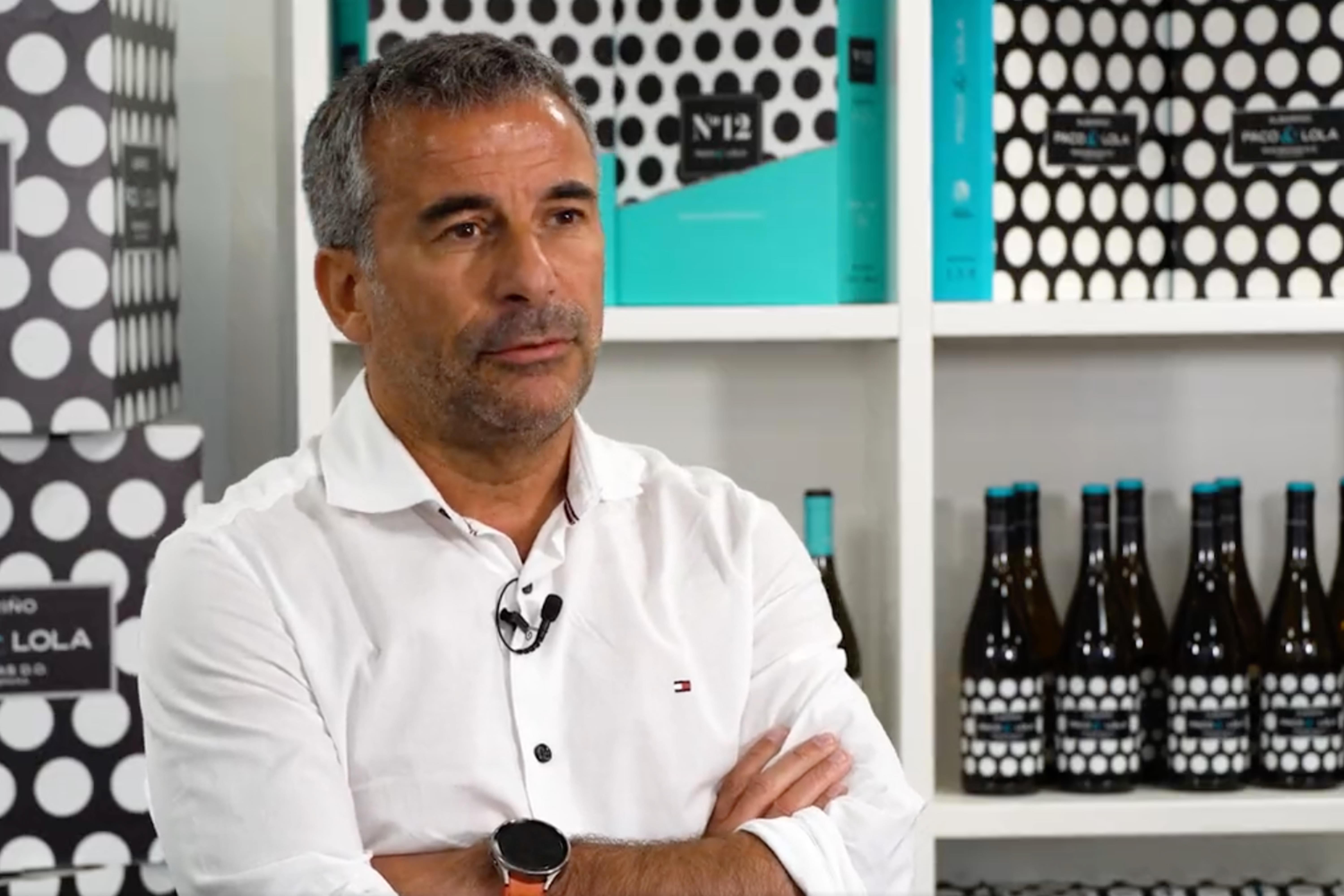
Latest information

Interview with Carlos Carrión, President of Paco & Lola
Paco & Lola, with more than two thousand plots located in the Salnés region, is a new and modern winery committed to a different way of making and experiencing wine. Its distinctive and daring image, its desire to break away from the norm and the creation of a globally recognised brand have become the three pillars of its business success. With Carlos Carrión, president of the cooperative behind the brand, we look back at its history and its commitment to innovation and technology.
Paco & Lola. How did this name come about?
It is a story of audacity born out of necessity. When the cooperative was created back in 2005, we had the option of using traditional names that referred to a place, a pazo (traditional Galician house in the countryside), or taking risks and exploring other possibilities that would allow us to have a name and a design that would break the unwritten, but established rules. The idea was to have a combination of names that would be easy to pronounce anywhere in the world. The second part shifted the responsibility to the design, so that if someone forgot the name, they would remember the polka dots.
By breaking away from the design and brand naming patterns established at the time, we were able to quickly place ourselves at the top of mind of potential consumers, and, most importantly, generate shared wealth among the more than 440 families that make up Paco & Lola, contributing in a decisive and important way to the economic sustainability of the Salnés region.
You are "wine of the moles". From the outset, you set out to create a distinctive image. Did you imagine being successful?
Marta Lojo's design, packaging and wine label studio had a lot to do with creating the image. The design of the Paco & Lola albariño (White Galician Wine) labels was mainly intended for export, as we mentioned before. It was a risky image that aimed to go beyond the norm. The image was the key, without forgetting that the real success is in the bottle and that the packaging must reflect the quality and character of the wine.
The brand was launched in 2006 and is now present in more than 50 countries. What was the key to positioning Paco & Lola internationally?
Paco & Lola is a brand that, from the beginning, was created with an international vocation, so we put a lot of emphasis on the packaging and looked for a name that, as we said, was easy to pronounce, in most languages around the world. On the other hand, we have always worked hand in hand with the D.O. Rías Baixas, actively participating in all the promotional activities that have undoubtedly contributed to the international fame that the albariño (White Galician Wine) grape achieved.
All of this, together with the unquestionable quality of the product, has been the key to positioning the wine in international markets until it became a leading brand in our Denomination of Origin and in the Spanish market.
What are Paco & Lola's main markets? What do foreign consumers appreciate most about your wines?
We are present in around 50 countries, the main ones being Canada, the United States, Puerto Rico, Ireland, the United Kingdom and the Netherlands. What international consumers value most is that Paco & Lola offers a very good quality Albariño (White Galician Wine) with a brand name and image that is easy to identify, pronounce and remember.
The brand is backed by a wine cooperative made up of more than 400 families. What added value does this origin bring to the product?
The fact that this large family is made up of more than 400 wineries and 2,000 plots of land means that there is a great diversity to its vineyards, backed up by a great deal of effort and awareness on the part of each wine-grower to achieve the best results year after year.
The marked smallholding, which characterises us, contributes to a greater potential for differentiation in each production process, according to the agronomic profile of each plot and the characteristics of each harvest. This "complex" production structure, which is difficult to replicate, is one of our greatest assets, involving a traditional cultural management that is also supported by R&D and new technologies aimed at improving quality and sustainability.
The smallholding and the diversity of the plots, from inland to the coast, means that we have vineyards for the production of long-life wines, sparkling wines and new products that we are working on.
How can innovation and tradition be combined in winemaking? What is the focus of your R&D&I policy?
Having such a diversity of plots means that specific attention must be paid to each type of soil, location, age of the vineyards, etc. This is why innovation is very important, from sustainability to digitalisation, from data collection and processing to process automation. The winery is therefore involved in a number of circular economy projects, such as fertilisation with grape by-products, a digital platform for analysing the risk of diseases based on the collection of atmospheric data in different plots. Other projects use AI to detect microorganisms in the fermentation process. Others are aimed at creating disease-resistant crops or sustainable alternatives to fertiliser, such as cover crops.